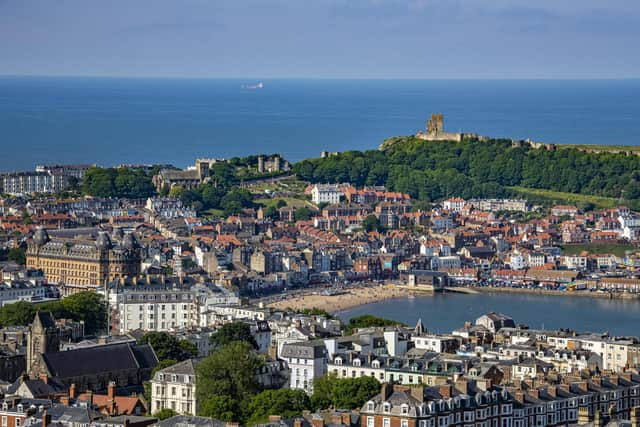Testing times for the Yorkshire Coast Business Improvement District - David Behrens
There are 42 brightly decorated examples right now, strung out on a 50-mile sculpture trail from Bempton to Spurn Point, and everyone I’ve spoken to – residents and visitors alike – thinks they’re wonderful. They are proof if proof were needed of the restorative power of art.
Yet had everyone known that they were paid for by a mandatory tax on every shop, hotel and pub, the birds would have disappeared like dodos.
Advertisement
Hide AdAdvertisement
Hide AdThey are a pet project of the Yorkshire Coast Business Improvement District, or BID, which uses levies from 1,300 firms between Staithes and Spurn to promote tourism. It has been in business since 2018 but the puffins are to many people the first tangible sign of its existence.


Last week Scarborough Council declared it had no confidence in the outfit, and urged its directors to resign. The motion was carried almost unanimously, which is more than can be said for the ballot that brought it into existence in the first place.
BIDs are supposed to deliver services to local firms to supplement those from the council. They exist only where the businesses in question have voted expressly for their creation.
In the case of the Yorkshire coast, the vote was passed by a slim margin of 217 to 175, on a turnout of just over 29 per cent. But it later emerged that those numbers included block votes by the Scarborough and East Riding councils, whose various car parks, public toilets and other amenities somehow counted as businesses. Without those 68 ‘yes’ votes, the BID would never have seen the light of day.
Advertisement
Hide AdAdvertisement
Hide AdIn other words, the ballot was rigged – even if no actual law was broken.
Can you imagine the furore if a regular election was held this way; if MPs, councillors or even Liz Truss were allowed to be elected on the say-so of a bus stop in Bridlington? There would be vote-manipulation allegations of Trumpian proportions, and this time they would be true.
How was this allowed to happen, and why were the councils so keen to foist a BID on their residents? Certainly their officers will have been swayed by the promise of grant funding being unlocked, but there may also have been a temptation to pass the buck; to abdicate responsibility for services that the BID could take on. Perhaps that’s why the officials never sought a mandate from councillors before casting their block votes.
None of this might have mattered had the BID proved itself a driving force for investment and tourism, but its activities have been superficial at best – a kite festival in Filey, a “monsterhero safari” and a workplace wellbeing award, whatever that means. A more substantial project like the construction of a new pier at Withernsea has attracted a BID investment of only £3,300.
I’ve probably spent more than that on ice cream.
Advertisement
Hide AdAdvertisement
Hide AdA measure of how badly the BID has failed to live up to expectations – not least the trust placed in it by all those voting toilets – is the number of firms who are prepared to go to court rather than be made to pay a levy they can neither afford nor justify.
Nearly 400 in and around Scarborough, and another 10 in the East Riding – that’s nearly a third of all eligible businesses – are being prosecuted by the two councils for non-payment of the levy. Their cases will be heard together in November, by which time the organisation may have ceased to exist. It falls to the councils to collect the money on the BID’s behalf but one wonders in the circumstances whether they have been over-zealous in exercising their duty.
Indeed it is questionable whether it’s the officials who ran the flawed vote, rather than the victims of it, who should be up before the judge.
For its part, the BID points to having supported many diverse projects, although its website is somewhat ambiguous about how much it has spent. How could it be otherwise when it’s still waiting for one in three of its funders to cough up?
Advertisement
Hide AdAdvertisement
Hide AdAnd ultimately, as one Bridlington councillor pointed out, it’s the weather and real puffins – not art installations, however appealing – that bring out the tourists. The BID may well disagree with this, in which case might I suggest that it asks the local bus station what it thinks.